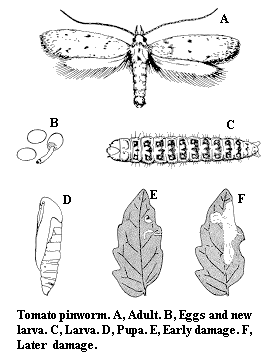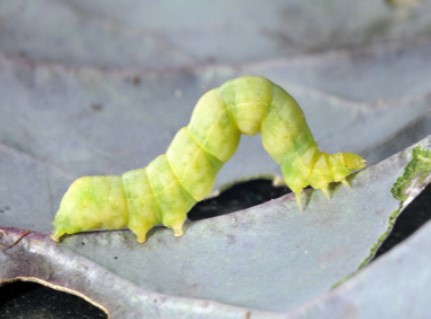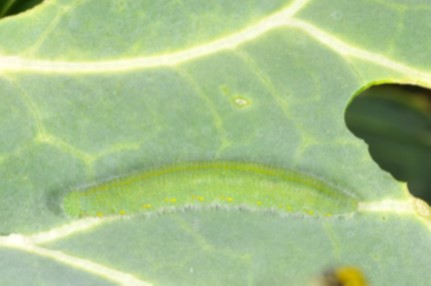Taking an environmentally sensitive approach to pest management
Reduced Risk Pesticides, at What Price?
Published: August 1, 2010
The price of some of the newer pesticides can be almost shocking. The funding of this project committed us to try and raise awareness about reduced risk products. So I thought it would be of interest to see how several reduced risk products fare with their prices.

A grower with tomato pinworm found a natural product (Botaniguard) to provide adequate control. Ironically he found it when spraying the product to control whitefly.
Image source: organic gardening news and info
So what is a reduced risk product? They are conventional products that have:
- Low impact on human health
- Low toxicity to nontarget organisms (birds, fish, etc.)
- Lower use rates
- Low potential for groundwater contamination
- Low pest resistance potential
- Compatible with IPM
The determination is made on specific uses of the pesticide, so it may be reduced risk for Cucurbits but not fruiting vegetables. And, oddly enough, ‘natural products’ or biopesticides are not considered as they are in a separate group.
I decided to compare an insecticide, a fungicide and a miticide.
Perm-up 3.2EC is labeled on the Cole crops at 4 oz/acre. Thus at $65 per gallon it would provide control for about $2 acre. Contrast this to Spintor which sells for $670 for 2&1/2 gallon or $2 per ounce. But its use rate is about 1/2 of Perm-up, so its cost is about $4 per acre. But who wants to lay out $670 to begin with! Radiant is a new product with a similar chemistry to Spintor that sells for $191/qt and applied at 10 oz/ac comes to $60/acre...tough sell!.
Quadris is reduced risk and costs $395, and at 15 oz/ac costs about $45 per acre. Penncozeb (similar to Mancozeb) can be purchased for $5 per pound and applied at 3 lb/ac for just $15 per acre. But a competing systemic fungicide with a more novel mode of action (Cabrio) costs $188 for 5 lb and costs about $37 per acre.

Cabbage looper, here are several reduced risk insecticides for their control.

Imported Cabbage Worm, there are several reduced risk insecticides for their control.
Lastly, there are fewer miticide options available now. Acramite is a reduced risk product that can be purchased for $68 per lb and that amount is applied per acre. Agri-Mek is a competing product but sells for $476 per gallon and if applied at 16 oz/ac comes to $60/ac.
So are reduced risk products more? Sometimes yes, sometimes no. But a key determination on what a grower may be willing to purchase is the $$ one has to pay for the minimum size container.
Could someone please work on the packaging and put some of these in a smaller unit size for smaller grower. No grower really wants a 5 or 10 year supply of a pesticide!
Subscribe to receive similar articles sent directly to your inbox!
- Irrigation water quality (08/01/10)
- Reduced Risk Pesticides, at What Price? (08/01/10)
REVISED: December 2, 2015